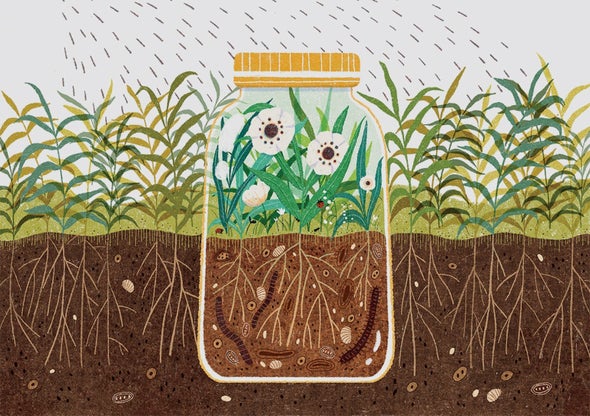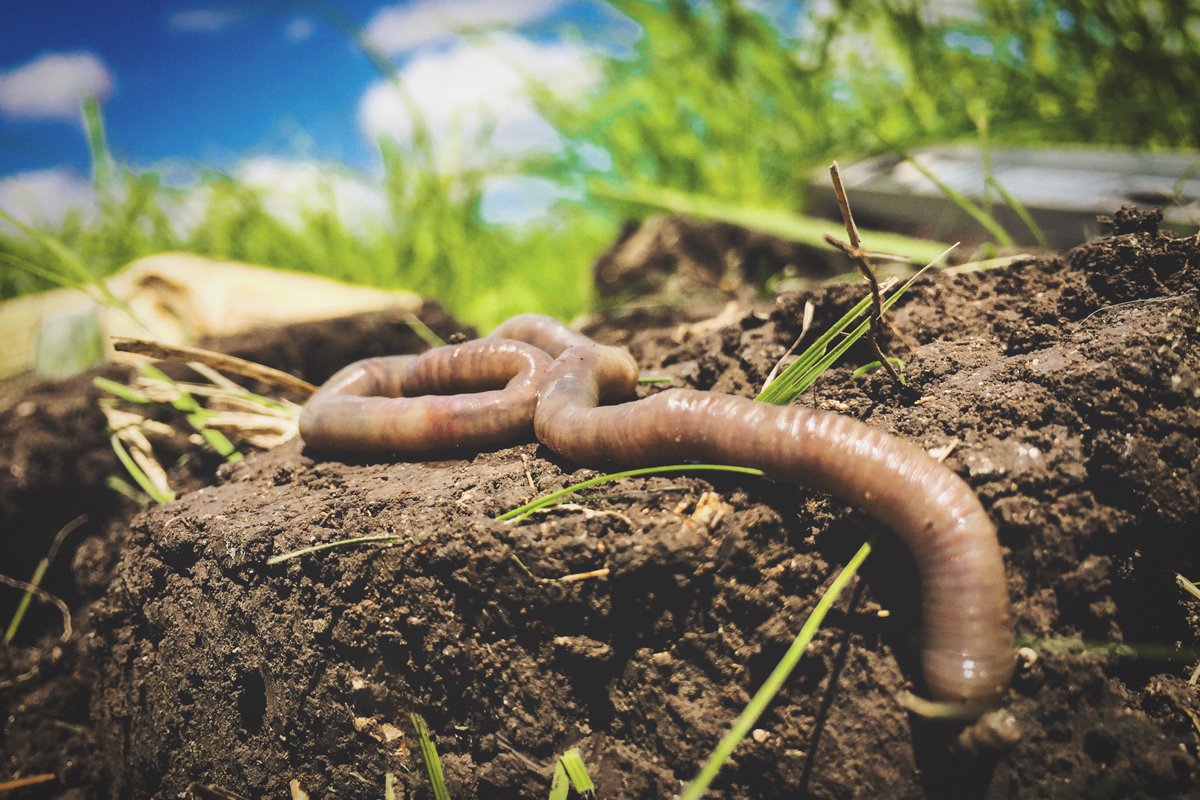By Nathan Donley, Tari Gunstone on June 1, 2021 أعرض هذا باللغة العربية
They harm worms, beetles and thousands of other subterranean species that are vital to agriculture

Scoop up a shovelful of healthy soil, and you’ll likely be holding more living organisms than there are people on Earth. Like citizens of an underground city that never sleeps, tens of thousands of subterranean species of invertebrates, nematodes, bacteria and fungi are constantly filtering our water, recycling nutrients and helping to regulate the planet’s temperature.
But under fields covered in tightly knit rows of corn, soybeans, wheat and other monoculture crops, a toxic soup of insecticides, herbicides and fungicides is wreaking havoc, according to our recent analysis in the journal Frontiers in Environmental Science. The study—to our knowledge the most comprehensive review ever conducted on how pesticides affect soil health—should trigger immediate and substantive changes in how the Environmental Protection Agency assesses the risks posed by the nearly 850 pesticide ingredients approved for use in the U.S.
Regulations currently ignore pesticides’ harm to soil species. Our study leaves no doubt that this disregard must change. For our analysis, conducted by researchers at the Center for Biological Diversity, Friends of the Earth and the University of Maryland, we looked at nearly 400 published studies comprising more than 2,800 experiments on how pesticides affect soil organisms. Our review encompassed 275 unique species or types of soil organisms and 284 different pesticides or pesticide mixtures.
In just over 70 percent of those experiments, pesticides were found to harm organisms critical to maintaining healthy soils—harms that have never been considered in the EPA’s safety reviews. Pesticide-intensive agriculture and pollution are driving factors in the precipitous decline of many soil organisms, such as ground beetles and ground-nesting bees. They have been identified as the most significant driver of soil biodiversity loss in the past decade.
Yet pesticide companies and our pesticide regulators have ignored that research. The EPA, which is responsible for pesticide oversight in the U.S., openly acknowledges that somewhere between 50 and 100 percent of all agriculturally applied pesticides end up on the soil. Yet to assess pesticides’ harms to soil species, the agency still uses a single test species—one that spends its entire life aboveground in artificial boxes—to estimate risk to all soil organisms: the European honeybee.
The fact that the EPA relies on a species that literally may never touch soil in its entire life to represent the thousands of species that live or develop underground offers a disturbing glimpse of how the U.S. pesticide regulatory system is set up to protect the pesticide industry instead of species and their ecosystems. What this ultimately means is that pesticide approvals happen without any regard for how those chemicals can harm soil organisms.
To add to this, as principles of regenerative agriculture and soil health gain popularity around the world, pesticide companies have jumped on the bandwagon to greenwash their products. Every major company now has Web materials touting its role in promoting soil health, often advocating for reducing tilling and planting cover crops.
As general tenets, both these practices are indeed good for soil health and, if adopted responsibly, are great steps to take. But companies know that these practices are often accompanied by increased pesticide use. When fields are not tilled, herbicides are frequently used to kill weeds, and cover crops are often killed with chemicals before crop planting. This “one step forward, one step back” approach is preventing meaningful progress to protect our soils. Pesticide companies have so far been successful in coopting “healthy soil” messaging because our regulators have shown no willingness to protect soil organisms from pesticides.
The long-term environmental cost of that failure can no longer be ignored. Soils are some of the most complex ecosystems on Earth, containing nearly a quarter of the planet’s biodiversity. Protecting them should be a priority, not an afterthought. Our research indicates that achieving this will require that we reduce the world’s growing and unsustainable reliance on pesticide-intensive agriculture. And it will require that the EPA take aggressive steps to protect soil health.

Leave a Reply